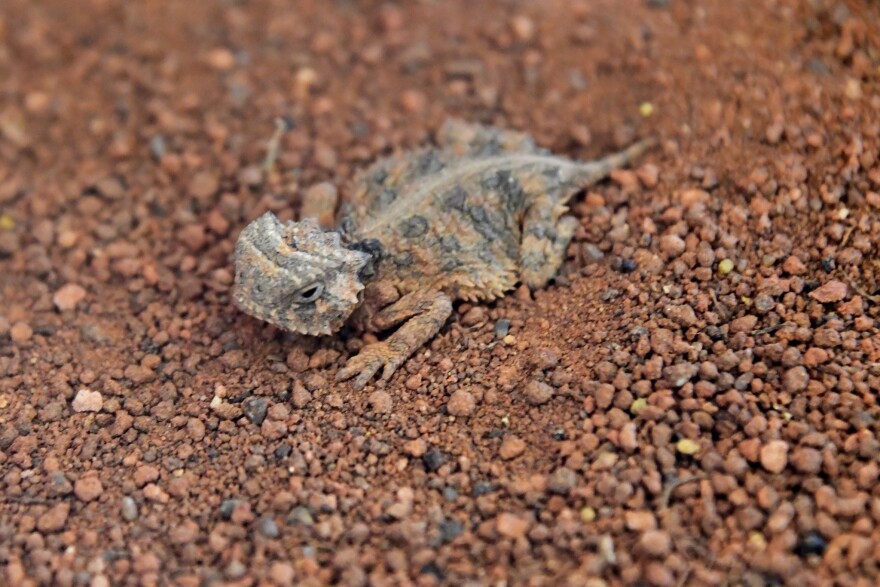Texas horned lizards, also known as horned toads for their round and squat bodies, have declined in numbers as their habitats are developed.
Yet the species can still be found in parts of Oklahoma where there are grasslands and ranches with plenty of ants to eat. Officials with the state's wildlife department solicit data from observers who spot the horned lizard in the wild.
Mark Howery, wildlife conservation biologist with the department, said the project is at least in its sixth year. Horned lizards are difficult to find because of their camouflage and quick survival skills.
"Your chances of finding them are really slim, especially because they can hear you coming and they can hide," he said.

The citizen science project gives biologists a boost in monitoring the animals, which are considered a species of greatest conservation need in Oklahoma. The department's 2016 comprehensive plan states the species' distribution is poorly understood in the region.
" It helps us to track how the species as a whole is doing because most reptiles – and horned lizards fall into this category too – most reptiles are really difficult to survey," he said. "They tend to be secretive, they tend to hide in vegetation, they don't make themselves known the way that birds do."
Since the project started, Howery estimates the organization received just under 1,100 sightings. The reporting form is on the department's website.
" It's neat to talk to people that, they live in areas where horn lizards occur, but they may see them five times a year, even though they're right around their house or right around their property," Howery said.
"It's just, they're just kind of a secretive animal, they're not ubiquitous."
Copyright 2025 KGOU







